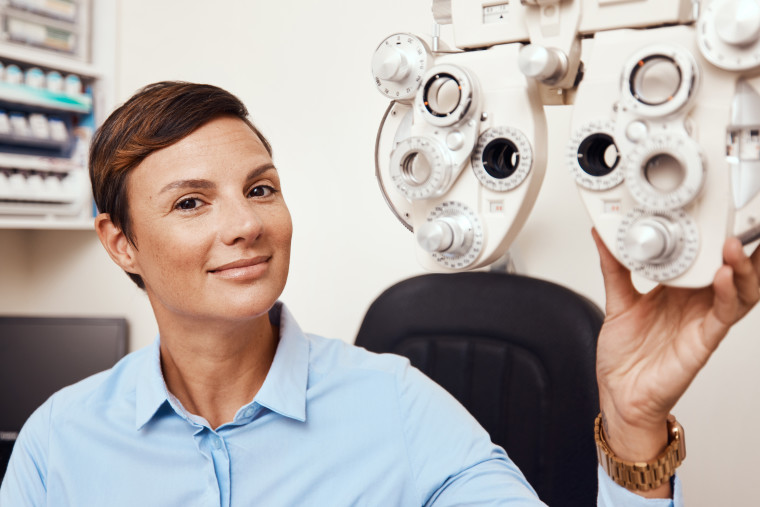All Categories
Featured
Table of Contents

The realm of vision correction is swiftly progressing, driven by groundbreaking technological advancements that are improving exactly how we regard and treat eye wellness. From laser surgeries to ingenious glasses, the options available today are not just a lot more reliable but also satisfy the unique requirements of each person. In this blog, we will certainly check out just how innovation is enhancing vision correction options, causing improved client outcomes and fulfillment.
1. Laser Technology Innovations.
At the leading edge of vision adjustment innovation are innovative laser procedures like LASIK and PRK. These techniques have actually been transformed by the introduction of femtosecond lasers, which develop precise and regulated cuts in the cornea, lessening discomfort and enhancing recovery time.The most current advancements, such as topography-guided LASIK, permit for a personalized therapy plan that makes up the distinct curvature of a patient's cornea. This degree of customization not just enhances the accuracy of the procedure but likewise lowers the risk of problems, resulting in clearer vision post-surgery.
2. Smart Contact Lenses.
The advancement of smart call lenses stands for a considerable jump in vision improvement innovation. These lenses can keep track of numerous health parameters, such as glucose levels in diabetics or intraocular pressure for glaucoma people.By incorporating sensing units right into the lens design, producers are producing an item that exceeds vision adjustment, supplying useful health info in real-time. As research around advances, clever call lenses could possibly reinvent just how we take care of eye wellness and problems connected to vision.
3. Advanced Intraocular Lenses (IOLs)
For individuals going through cataract surgical procedure or seeking services for presbyopia, advanced intraocular lenses have become a game-changer. Today's toric and multifocal IOLs are created to give clear vision at numerous distances, decreasing reliance on glasses for day-to-day tasks.New innovations enable the customization of IOLs based upon private lifestyles and aesthetic demands. Fitting IOLs can move their emphasis based on the eye's setting, supplying a more all-natural visual experience. These innovations make certain that patients delight in better visual results after surgery, improving their lifestyle.
4. Telemedicine and Remote Tracking.
The COVID-19 pandemic sped up the fostering of telemedicine, and this fad has actually prolonged right into eye treatment. Patients can now talk to eye treatment specialists from the comfort of their homes, reviewing signs and symptoms and therapy options without the need for in-person check outs.Remote monitoring devices that connect to smartphones or tablets enable clients to track their eye wellness and vision adjustments over time. This information can be shown doctor, ensuring prompt treatments and individualized treatment plans. The benefit and access of telemedicine are specifically beneficial for individuals with wheelchair obstacles or those living in rural locations.
5. Expert System in Eye Care.
Fabricated knowledge (AI) is increasingly ending up being an essential component of eye care. AI algorithms are made use of to examine huge sets of information, allowing early detection of problems like diabetic retinopathy and macular deterioration via retinal imaging.AI can help eye treatment experts by highlighting abnormalities that may call for additional investigation, improving analysis accuracy and effectiveness. By streamlining the analysis procedure, AI not only improves person treatment however additionally permits even more prompt treatment interventions.
6. Personalized Glasses Solutions.
The surge of tailored eyewear has transformed just how individuals come close to vision improvement. Advanced 3D printing modern technologies enable the production of personalized structures and lenses tailored to a patient's one-of-a-kind facial structure and vision needs.Along with aesthetic advantages, customized eyewear enhances comfort and performance. Clients can currently pick from different lens options, including blue light stopping, photochromic, and high-index lenses, guaranteeing they locate the best solution for their way of living and aesthetic preferences.
Verdict.
Technology is dramatically changing vision improvement options, leading to much better end results and enhanced satisfaction for patients. From ingenious operations and wise get in touch with lenses to telemedicine and AI-driven diagnostics, the future of eye care is encouraging. As these technologies remain to progress, people can anticipate a more efficient and tailored method to vision correction, ultimately improving their lifestyle. Accepting these improvements not just guarantees optimal eye health and wellness yet also equips people to see the globe with clarity and confidence.Table of Contents
Latest Posts
Expert Auto Repair at Montclare Auto Repair - Don’t Wait, Act Now!
Published Apr 20, 25
2 min read
Contact Us: Call Us Today for Trusted Auto Solutions & Repairs in Montclare
Published Apr 20, 25
2 min read
Make Your Dream Fencing a Truth with Easy Funding
Published Apr 20, 25
1 min read
More
Latest Posts
Expert Auto Repair at Montclare Auto Repair - Don’t Wait, Act Now!
Published Apr 20, 25
2 min read
Contact Us: Call Us Today for Trusted Auto Solutions & Repairs in Montclare
Published Apr 20, 25
2 min read
Make Your Dream Fencing a Truth with Easy Funding
Published Apr 20, 25
1 min read